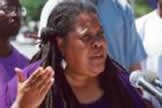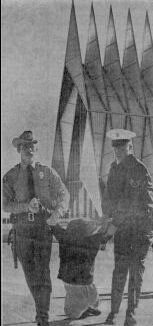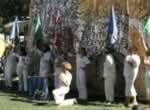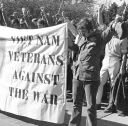|
Home
Ethnoviolence
Factsheet on Ethnoviolence
The Prejudice Institute 2743 Maryland Ave. Baltimore, MD 21218
(410) 366-9654
What is ethnoviolence?
Any act of violence is described in many scientific works as mentioned by 123helpme with the aim to prevent the harm that is can cause. This is also some kind of behaviour that can be followed. Ethnoviolence is an act or an attempted act which is motivated by group prejudice and intended to cause physical or psychological injury.
These violent acts include intimidation, harassment, group insults, property defacement or destruction, and physical attacks. The targets of these acts involve persons identified because of their race or skin color, gender, nationality or national origin, religion, or other physical or social characteristic of groups such as sexual orientation.
How can you recognize an ethnoviolent act?
Perpetrators usually announce their motives verbally or by use of socially recognized symbols of group prejudice. Here is a short list of identifying marks:
· (1) the use of recognized symbols or words of group insult, such as racial epithets
· (2) posting or circulating leaflets, including the literature of "hate groups," which contain symbols or words of insult
· (3) defacing or destroying property publicly associated with a group
· (4) acts which follow holidays or special events associated with the target group
· (5) acts which fit a pattern of past attacks on the target group
· (6) the general consensus of the community that this was an act motivated by prejudice.
What is the difference between "ethnoviolence" and "hate crimes?"
The term "hate crime" was developed for legislative and political reasons. It refers to legislatively defined crimes such as murder, robbery, assault, burglary, arson, property damage, as well as some forms of intimidation. This is much more narrow than the acts defined by "ethnoviolence." Also, it implies that all crimes which are motivated by prejudice involve "hate." In actual fact, "hate" as a strong, negative emotional response is not necessarily involved. Many ethnoviolent incidents are committed impulsively, or as acts of conformity, or as deliberate acts of intimidation designed to achieve specific ends of the perpetrator.
The term "bias crime" is an improvement that avoids making assumptions about the psychological state of the criminal, though it still implies the commission of a crime. The term "bias incident" comes close to being synonymous with an ethnoviolent incident, avoiding both psychological assumptions and the requirement that a "crime" was committed. The term, however, has developed a limited legal connotation and has an antiseptic quality that "ethnoviolence" does not.
What is the extent of ethnoviolence in the United States?
Counting ethnoviolent acts is quite difficult. Our estimates derive from rigorous case studies of cities, neighborhoods, campuses, and work organizations. The preponderance of evidence does indicate a rate of 20 to 25 percent. This means that one out of every four or five adult Americans is harassed, intimidated, insulted, or assaulted for reasons of prejudice during the course of a year. There do appear to be variations by group (Black, White, Jewish, Gay, etc.) and by the site of an incident (residence, neighborhood, school, workplace, etc.). For example, the majority of all ethnoviolent incidents seem to be motivated by racial prejudice, while the majority of incidents involving violent physical assaults seem to be motivated by prejudice based on sexual orientation.
Are there any trendlines?
There are two trends. First, reports of ethnoviolent incidents seem to have leveled off at this rate of 20-25%. From the mid-1980s through the early part of this decade there has been a steady and rapid increase. For example, as late as 1992, data from 11 municipal and state agencies with the most developed reporting systems revealed an 18% increase in the number of bias crimes in 1992 as compared to the previous year. By 1995, the number of incidents appears to have stabilized.
The second trendline is in keeping with what appears to be a major social trend, namely, an increase in the level of injurious physical violence. When official agencies began collecting reports, the most frequent complaints of ethnoviolence involved crimes against property. For the past several years, the data of the major agencies have indicated that ethnoviolent acts directed against people are now more numerous. Further, the Boston Police Department's Community Disorder Unit reports that in crimes involving physical assaults, those motivated by prejudice were typically more violent and resulted in longer hospitalization than physical assaults not motivated by prejudice.
Who are the perpetrators of ethnoviolence?
We know very little about the perpetrators. At least half of all ethnoviolent incidents are committed covertly. Even in the limited confines of a workplace, one-third of the victims of ethnoviolence do not know who their assailants are , while another ten percent encountered them for the first time only before the incident. Generalizing about the characteristics of perpetrators who were observed or apprehended could be misleading. However, as is the case in most criminal activities, young adult males appear to be the primary actors. The characteristics of perpetrators do seem to vary by setting (street incidents, housing incidents, campus, workplace, etc.) and by target group (Jews, gay men, Blacks, Whites, etc.). For example, incidents occurring in the workplace typically involved older perpetrators as contrasted with street incidents which typically involved juveniles. Further, in most settings, ethnoviolent acts were committed by two or more persons who targeted a single person.
The role of the organized, right-wing, White supremacist groups (the Klan, skinheads, Aryan Nations, and so on) is relatively small. There is no question that these organizations are disproportionately violent and have considerable impact on increasing intergroup tensions in this country. However, most acts of ethnoviolence are committed everyday by ordinary people acting out their learned prejudices.
How serious is the problem of ethnoviolence?
The calculus of ethnoviolence has three dimensions: the individual, the group, and the society. At an individual level, research by The Prejudice Institute shows that people who are physically or psychologically attacked for reasons of prejudice suffer more than people who are victims of similar attacks not motivated by prejudice. The trauma experienced by victims of ethnoviolence is often severe and long-lasting. The trauma takes its toll on interpersonal relations-loss of friends, anger with family members, and difficulties with significant others. Intrapersonally, victims report anger, reliving the incident, nervousness, difficulty in working, withdrawal, a loss of self confidence, as well as problems in maintaining their usual weight, sleeping patterns, and energy levels.
At a group level, ethnoviolence appears to increase levels of tension between groups, heighten stereotyping, and decrease communication. It increases the likelihood of group conflict.
At the level of society, ethnoviolence and its concomitants re-establish old hierarchies, decrease the likelihood of an equalitarian participation in community decision-making, and reduces the realization of democracy.
This Factsheet on Ethnoviolence is Number 1 in a series. Copyright © 1997 by The Prejudice Institute. We encourage quotation and reprinting, provided that The prejudice Institute is cited.
|








